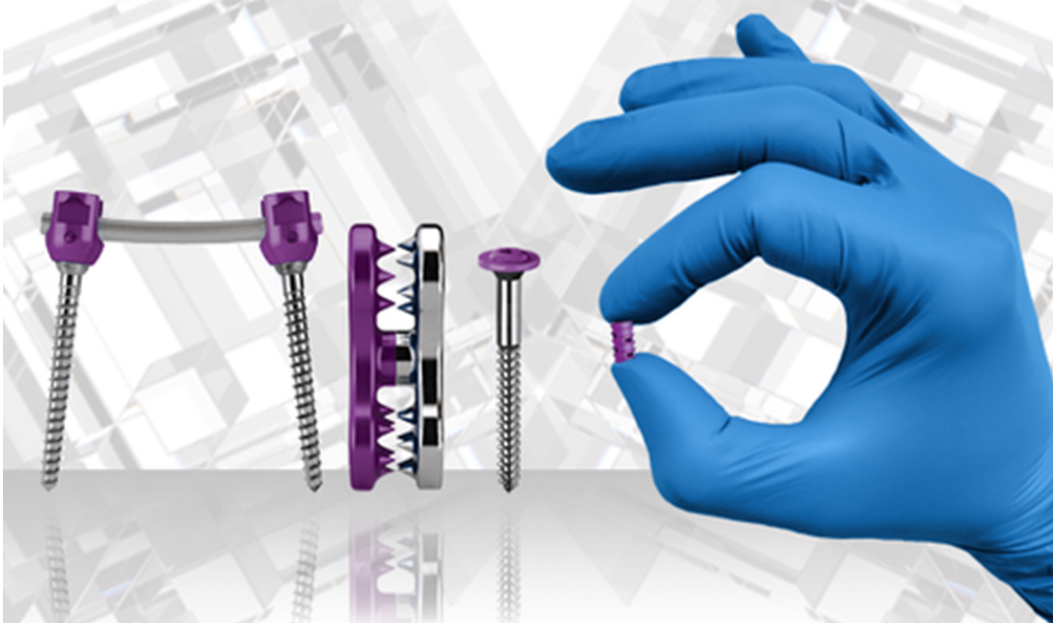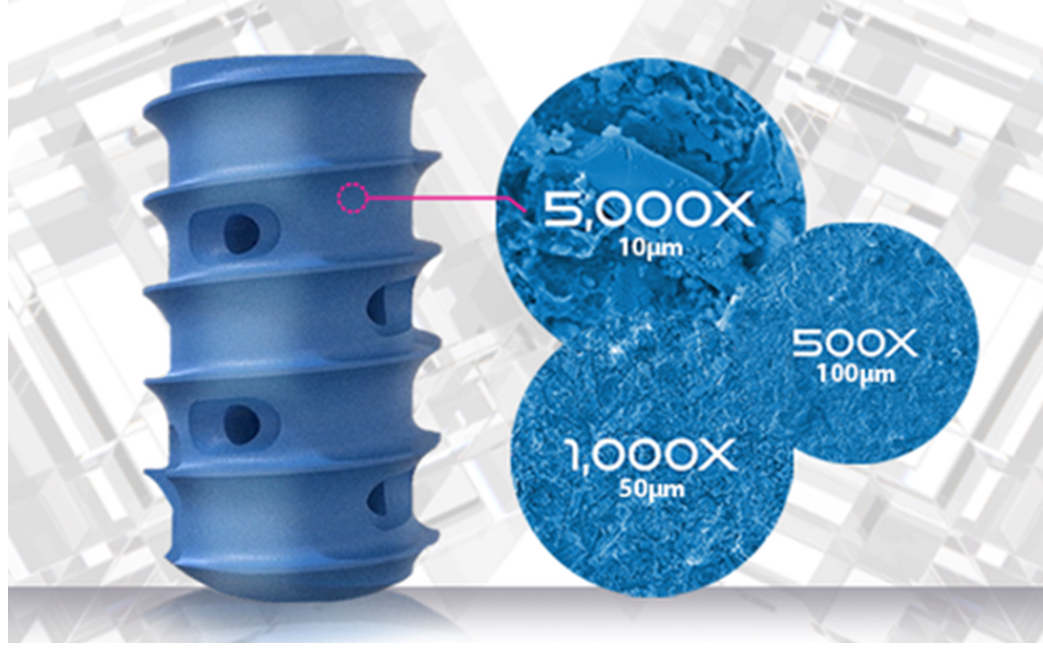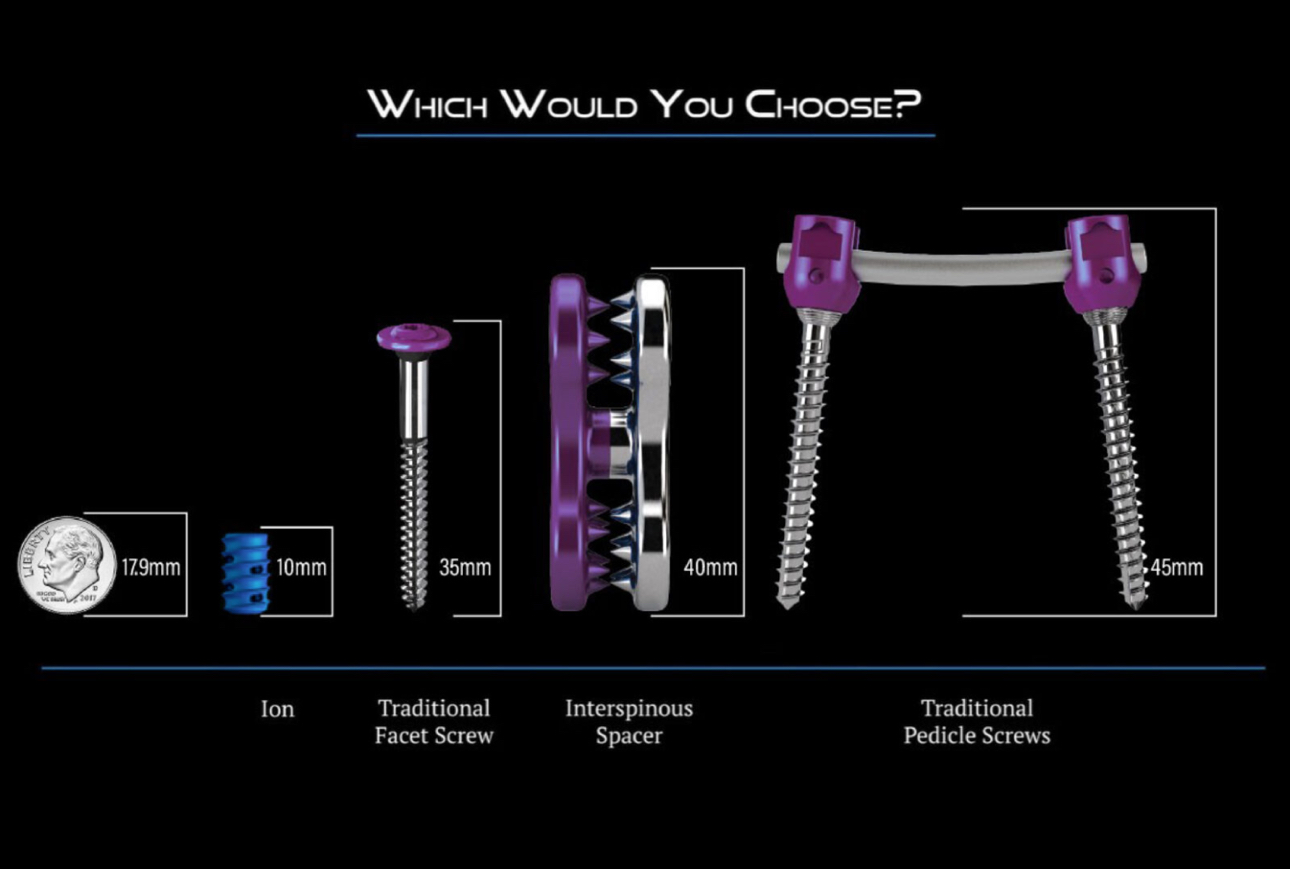ION Minimally Invasive Facet Fusion
The ION® Facet Screw system is a minimally invasive technique to stabilize and fuse posterior elements of a spinal segment. It is intended to be used from C2 to S1 for stabilization of the facet joints on both sides. The ION® procedure, typically conducted in an outpatient surgery center, is minimally invasive. Employing micro implants smaller than a dime, it targets painful areas of the spine. Crafted with safety as a priority, it offers patients a less invasive alternative to conventional spine surgery. The system is FDA approved and the smallest posterior spinal fixation implant available on the market.
ION® system is a true minimally invasive surgery (MIS) intended for facet fusions. It may also be used an adjunct to other minimally invasive decompressive procedure. The ION® facet screw system instruments were designed to minimize tissue trauma and incision size while delivering the ION® implants to the surgical location.
Unlike other spinal fixation options, the ION® has zero profile above the bone which may prevent soft tissue contact and the potential for irritation. The implants is packed with bone graft prior to and after insertion to help facilitate fusion while providing an opportunity for bone to bridge over the implant and prevent implant migration.
Competitive Size Matrix
Using micro implants smaller than a dime to treat painful regions of the spine, ION® is 30mm-40mm smaller than traditional pedicle screws.
Nanotex® Surface Technology
Developed with osteointegration in mind, the hydrophilic surface created by Nanotex® takes advantage of ionic bonds to attract and hold BMA & other fluids that may contain key growth factors.
Minimally Invasive Surgery
Most often performed in an outpatient surgery center, it was designed with safety in mind and to help provide patients with a less invasive solution than traditional spine surgery.
Osteointegration Promotion
Hydrophilic surface created by Nanotex® technology takes advantage of ionic bonds to attract and hold BMA, and other fluids necessary for osteointegration.
Which would you choose?
Spinal fusion surgery for degenerative disc disease without instability is successful 50% of the time. Minimally invasive posterior element fusion procedure, with or without intracept, offers least traumatic option.
References:
- Daniell JR, Osti OL. Failed Back Surgery Syndrome: A Review Article. Asian Spine J. 2018 Apr;12(2):372-379. doi: 10.4184/asj.2018.12.2.372. Epub 2018 Apr 16. PMID: 29713421; PMCID: PMC5913031.
- Nachemson, A. L. (1993). Evaluation of results in lumbar spine surgery. Acta Orthopaedica Scandinavica, 64(sup251), 130–133. https://doi.org/10.3109/17453679309160143







